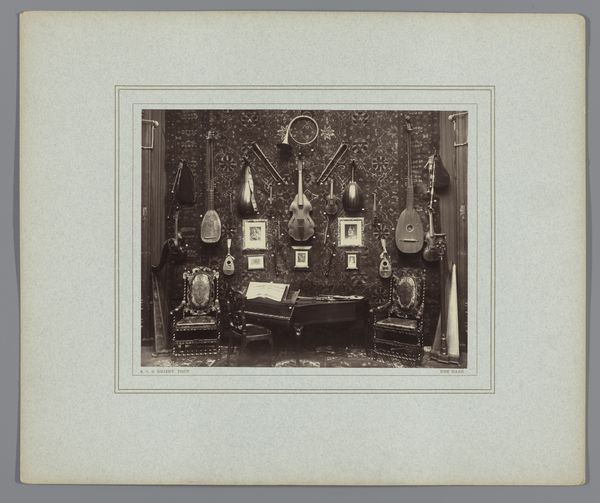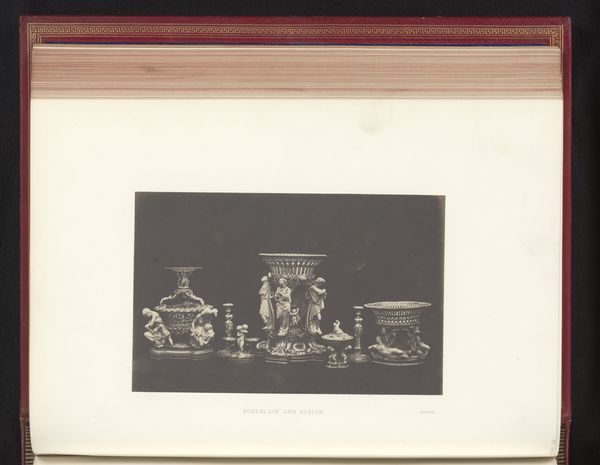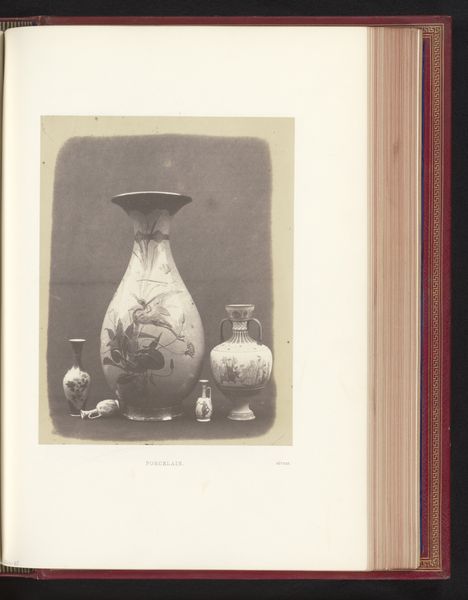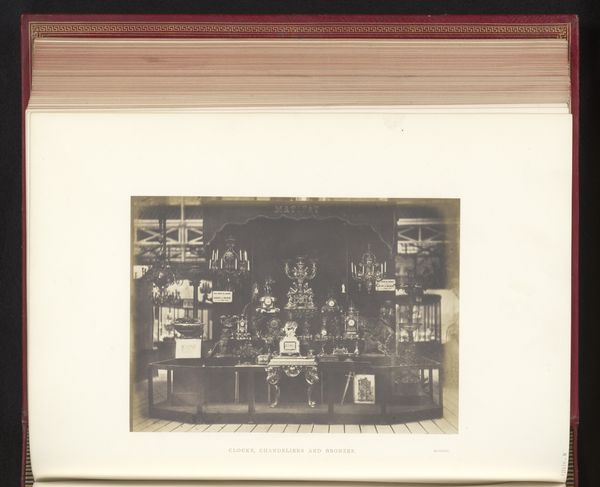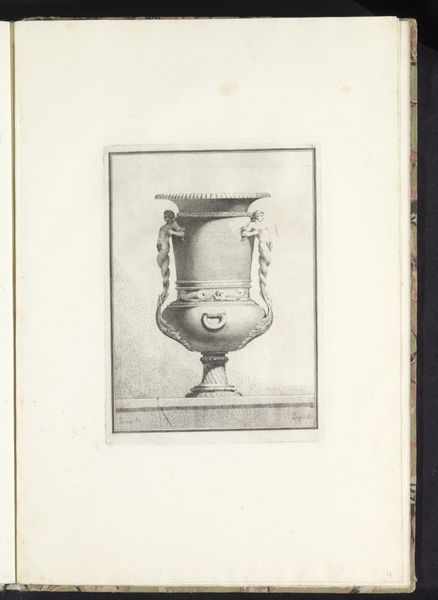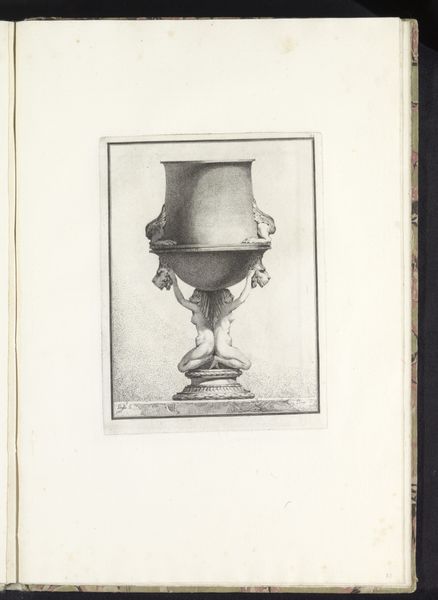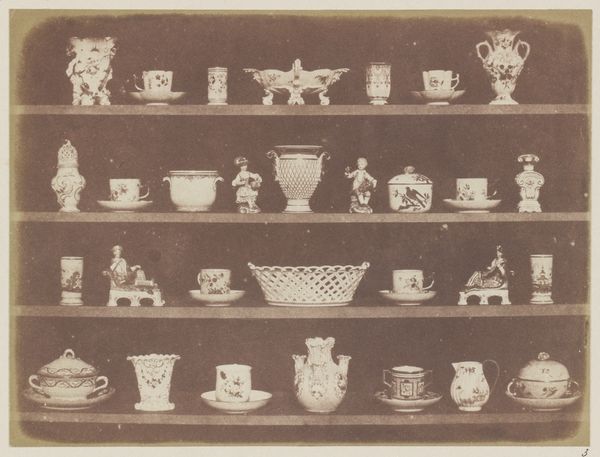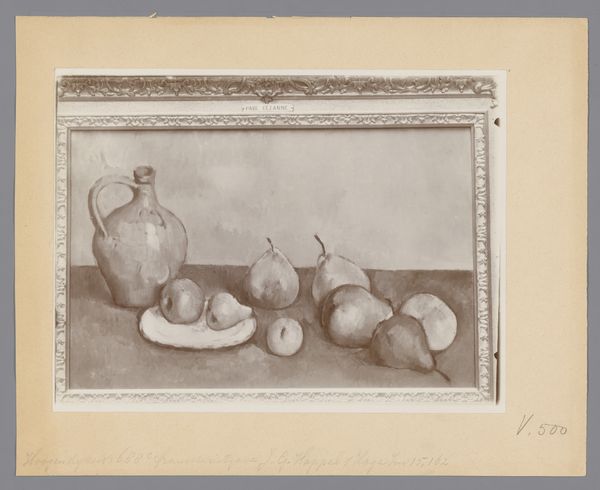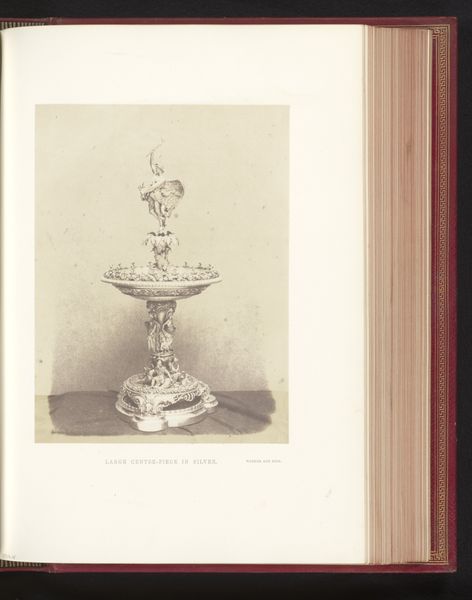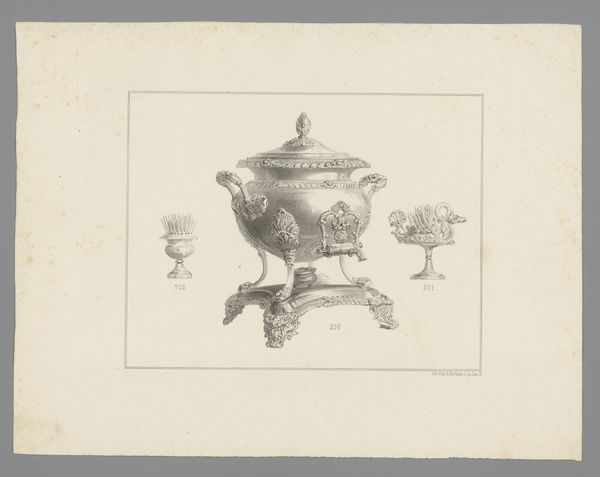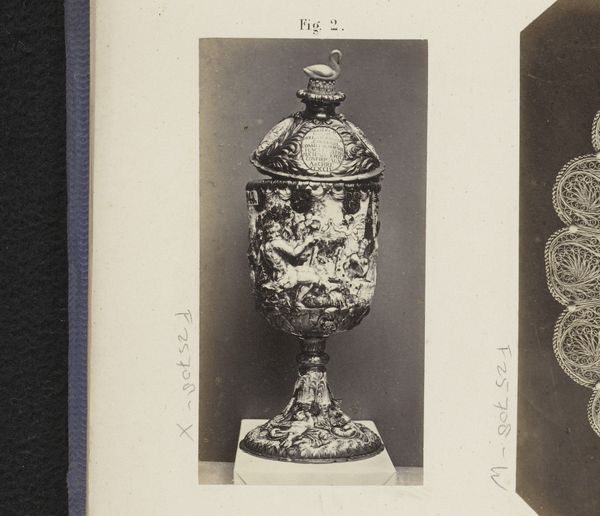
Porseleinen vazen, potten en een kist van manufacture nationale de Sèvres tentoongesteld op de Great Exhibition of the Works of Industry of All Nations van 1851 in Londen 1851
0:00
0:00
ceramic, photography
#
still-life-photography
#
ceramic
#
photography
#
ceramic
Dimensions: height 153 mm, width 225 mm
Copyright: Rijks Museum: Open Domain
Curator: Here, we have a photograph taken by Hugh Owen in 1851. It depicts a display of porcelain vases, pots, and a chest crafted by the Manufacture Nationale de Sèvres. They were presented at the Great Exhibition held in London during that year. Editor: The photograph, at first glance, conveys a feeling of solemnity. The subdued lighting and muted tones, combined with the formal arrangement of objects, evoke a sense of the past. Curator: Indeed. The Great Exhibition was a showcase of industrial prowess, particularly of Britain, but with displays from across the Empire and Europe. Sèvres porcelain represented French luxury and craftsmanship, key in international trade and rivalry. These items became powerful symbols. Editor: The objects, elevated in their placement, imply a hierarchy. We must question, even through this single, staged photographic moment, how did the exhibition influence taste, consumerism, and class distinctions of the time? I see subtle power dynamics embedded within this seemingly simple photograph. Curator: Exactly! And let's think about Owen's choice of photography to capture these pieces. Photography was still quite new and presented its own issues with social status. Replicating these objects via photographic prints allowed their accessibility in theory, but not in actuality. Most prints would be purchased for private consumption to show taste, wealth, and access to industrial novelties and craftsmanship. Editor: Furthermore, who could access, create and control photography itself? Consider the power and the cultural implications residing in this form. We have to ask ourselves if photography, instead of merely representing objects, plays a part in creating hierarchies? Curator: I think both arguments can stand! Considering, also, photography’s role in constructing colonial narratives. Here we observe an example of photographic manipulation displaying, marketing, and cementing hierarchies that reverberate still in today’s social systems. Editor: A remarkable visual snapshot from a bygone era! Curator: Indeed. Let's contemplate how images from events like The Great Exhibition continue to subtly mold the landscape of value even now.
Comments
No comments
Be the first to comment and join the conversation on the ultimate creative platform.
